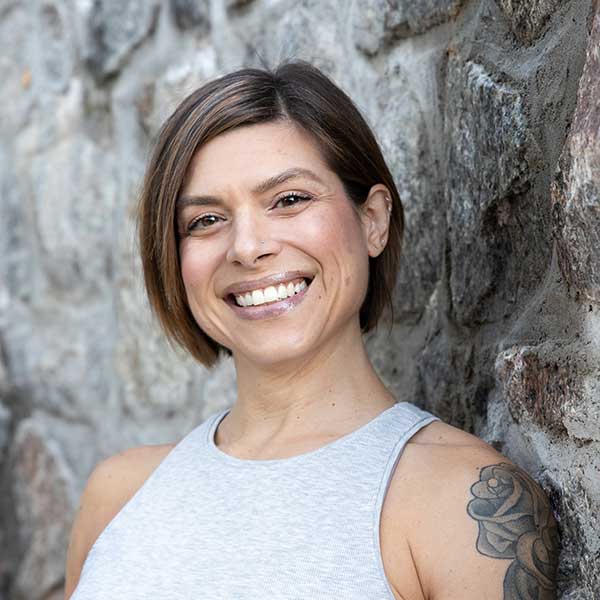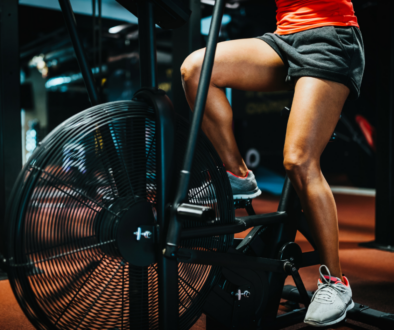If You’re Over 40, Stop Skipping Recovery
 We’ve made it to “mid-life” and we’ve (hopefully) acquired some wisdom along the way. One thing I’ve learned is that we can’t train like we did in our 20’s anymore and we can’t skip recovery like we used to either. In my 20’s and early 30’s, I had no bedtime, taught too many fitness class in addition to my own workouts, and foam rolling hadn’t been invented yet. Now that I’m older and wiser, I prioritize recovery so I can workout and train the way I want to (and need to in order to reach my goals). Here are 8 strategies for recovery over 40 for you.
We’ve made it to “mid-life” and we’ve (hopefully) acquired some wisdom along the way. One thing I’ve learned is that we can’t train like we did in our 20’s anymore and we can’t skip recovery like we used to either. In my 20’s and early 30’s, I had no bedtime, taught too many fitness class in addition to my own workouts, and foam rolling hadn’t been invented yet. Now that I’m older and wiser, I prioritize recovery so I can workout and train the way I want to (and need to in order to reach my goals). Here are 8 strategies for recovery over 40 for you.
What is recovery?
I heard someone say “training is like digging a hole, recovery is filling it back up.” Without proper recovery, we won’t see results, we won’t make improvements in our strength, we’ll be more prone to injury, we’ll get sick more often, we’ll feel sore and tired all the time, and we probably won’t be a nice person to be around.
So let’s recover, ok? Here’s what recovery over 40 looks like:
1. Don’t skip the cool-down
If you have 60 minutes to workout, save the last 10 minutes for cool-down. Switch your playlist to something chill and stretch or do some self-myofascial release (I’ll share my favorite tools below in #7). Remember to breath slow and deep to help facilitate relaxation. This time isn’t just about improving your flexibility (though most of us need that too), it’s most important for down regulating the nervous system after the workout that got us all hyped up.
2. Hydrate
Drink 100oz of water daily. Add electrolytes to replenish what you lose sweating and to make the water tastier and easier to finish. Don’t leave the house without a water bottle! You can count herbal tea and unsweetened sparkling water toward your daily water target.
3. Always have a post-workout meal
Women over 40 especially need to eat within 30 minutes of working out. If your workout ends right at breakfast or lunchtime, just eat that meal (high protein of course!). If your workout ends between meals, that’s a perfect time for a recovery protein smoothie. I make mine with this protein powder.
4. Eat 1g of protein per pound of bodyweight
The best way to hit this target is to spread it out over four servings: three meals (breakfast, lunch, and dinner) plus a protein smoothie. If you’re a women weighing more than 150lb, start with a daily protein target of 150g. Don’t make the mistake of thinking protein is only important on training days. The days you’re not training, you’re recovering and protein is needed for tissue repair.
5. Don’t work the same muscle the same way on consecutive days
If you’re doing full-body strength training, have at least one (maybe two) days between workouts. If you strength train legs one day, don’t do sprint intervals on the bike or treadmill the next day. If you do upper body strength training one day, don’t go to a Bootcamp class full of burpees and planks the next day. Give your muscles a day or so to recover.
6. Do lighter work on the in between days
Recovery doesn’t mean sitting on the couch all day. One of my training philosophies is never work so hard that you can’t go for a walk or hit your step count target the following day. The goal is to move every day. The days between hard workouts are perfect for Pilates, mobility, physical therapy or corrective exercises, and/or yoga.
7. Have a daily stress management practice
A daily stress management practice could be yoga, meditation, breath work, and/or self-myofascial release. My favorite SMR tools are the foam roller, the Orb Ball, Yoga Tune-Up balls, a core ball (for abdominal massage) the Thera-Cane, the Tiger Tail massage stick, and the massage gun. For me, I have morning practice of meditation, breath work, and journaling. I attend yoga classes two days per week, plus a little asana on my own. And I do self-myofascial release daily. I carry small tools in my gym bag for post-workout and I have the rest of my tools in sight in my living room so I actually use them.
8. Sleep 8+ hours on a consistent schedule every night
One of the many reasons sleep is crucial is growth hormone (which is helps build muscle) is released during the first few hours of sleep. If you stay up past your normal bedtime, you won’t release growth hormone later. You’ve missed your window. Side note, eating within 2-3 hours of sleep also interrupts the release of growth hormone. Remember that good sleep is the foundation for everything and no amount of foam rolling will compensate for poor sleep.
Now that you have the wisdom to recognize how you’ve been under-appreciating recovery and you have these 8 strategies for recovery over 40, what are you going to start adding into your routine first?
This post contains affiliate links.



